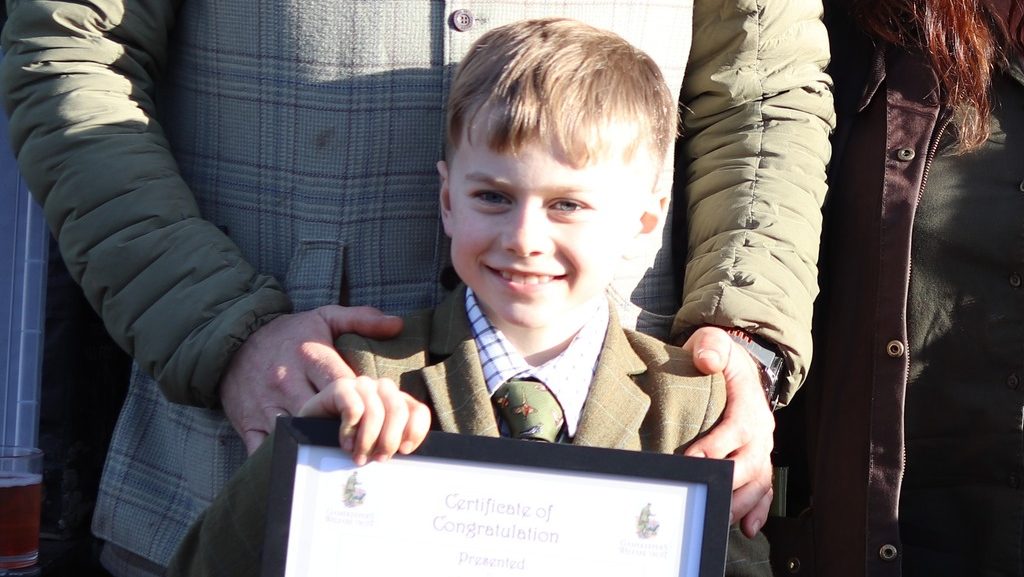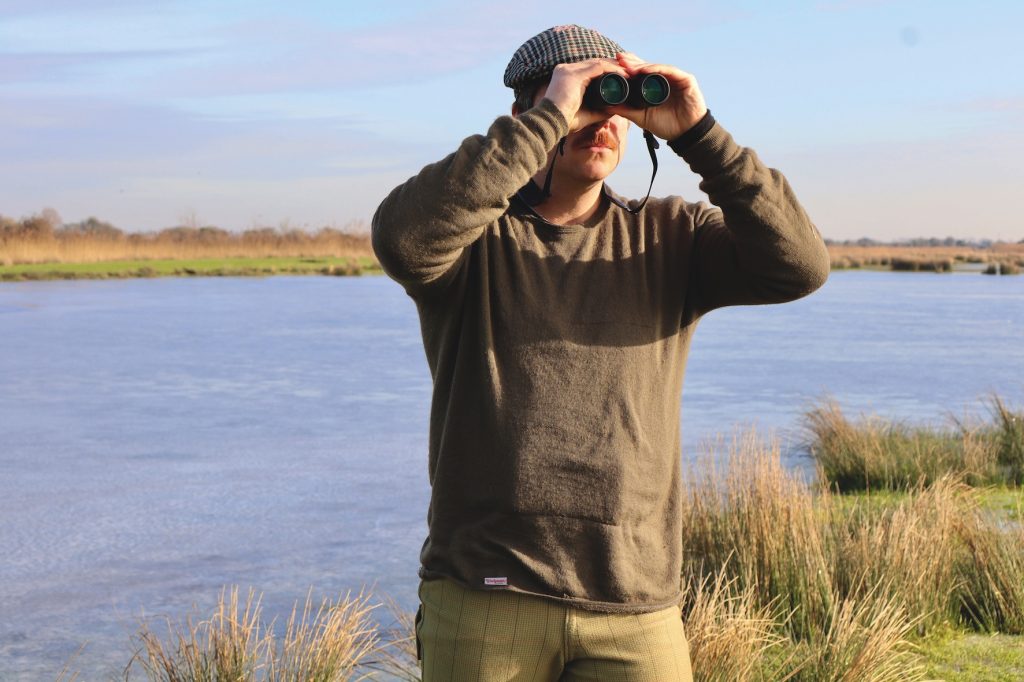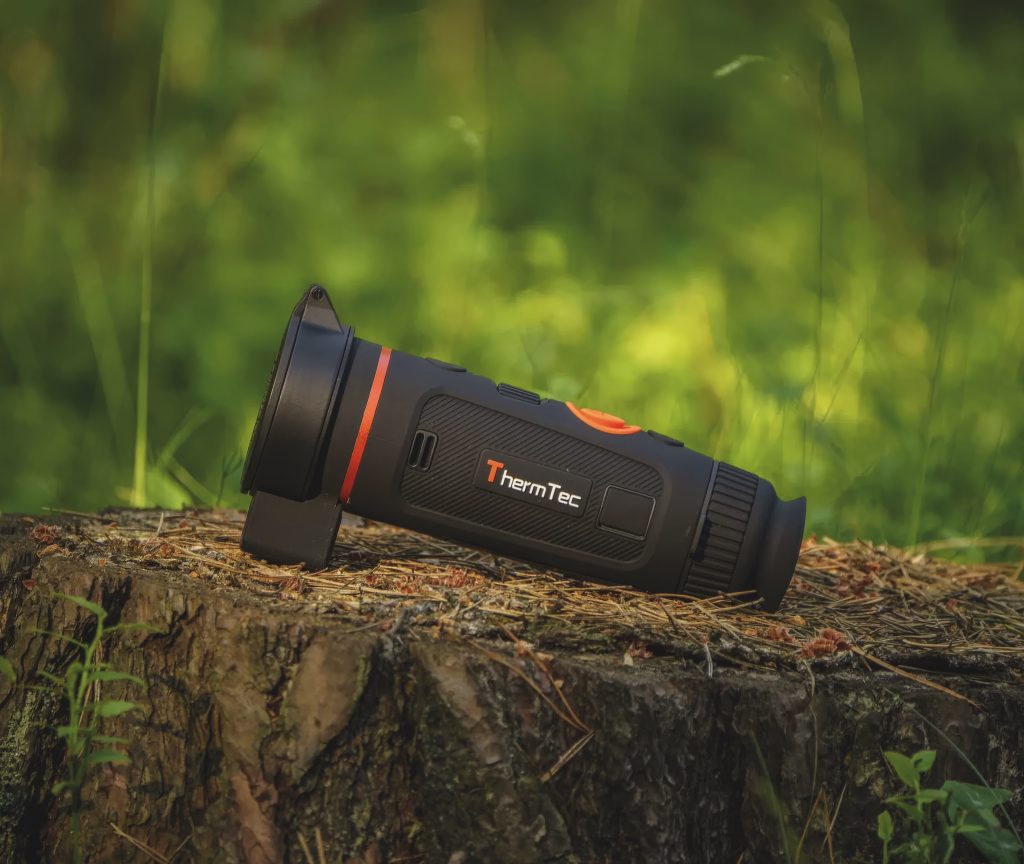Win CENS ProFlex DX5 earplugs worth £1,149 – enter here
Inherited gun? How to make sure it fits you properly
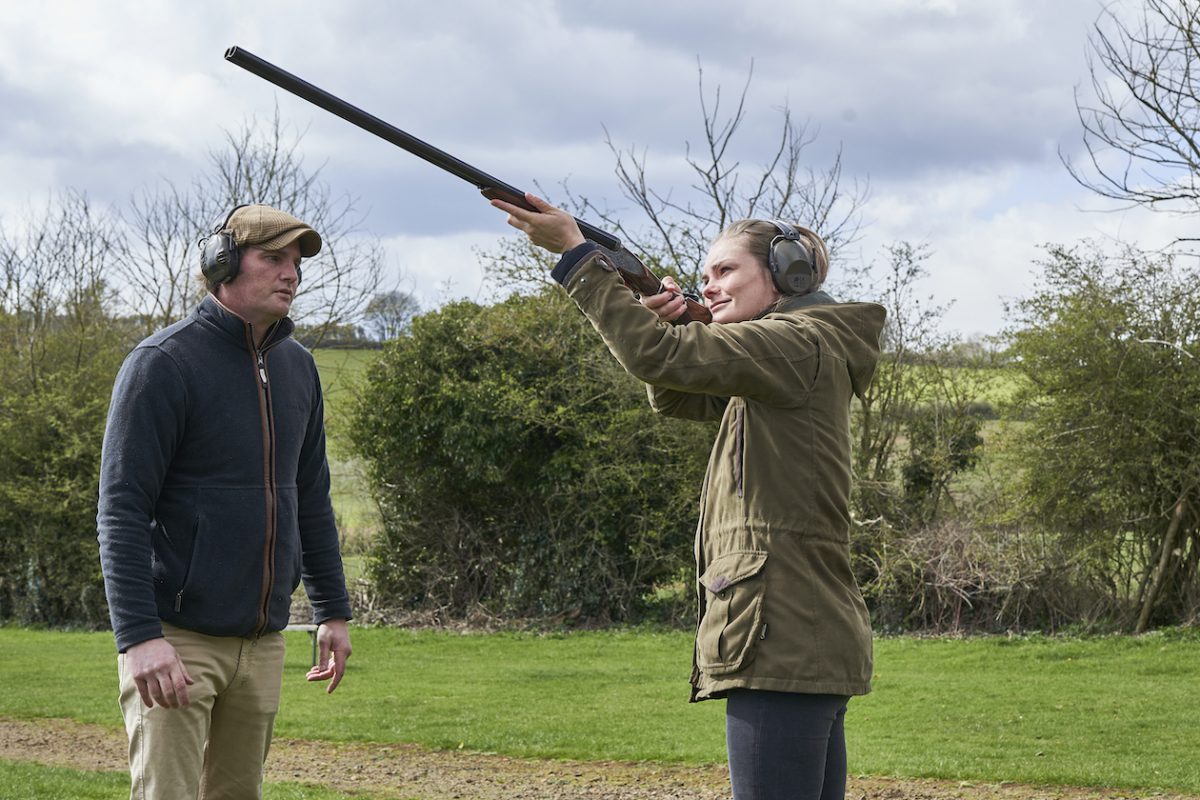
There’s a certain prestige in an inherited gun, in using your grandfather’s or great-grandfather’s pair of Purdeys or Bosses, but how often do those lucky people shoot superbly? Not infrequently, I have older gentlemen come for a lesson and their shooting, in terms of their technique, is OK. (Read ‘are English guns the best?’)
What should I do with a shotgun or rifle when the owner dies?
“But do you wear your grandad’s trousers much?” I often ask, midway through the lesson. They usually tell me they don’t, because he was “a huge fellow” or because he was only 5ft 6in tall. “Then why are you plugging away with his old guns that don’t fit you at all either?” is my next question. (Read all about gunfit here.)
Inherited gun and gunfit
Many of these people are from an era where gunfit wasn’t spoken about much. There was a feeling that if you had a nice inherited gun and did a fair bit of shooting, you’d eventually become a fine shot. Interestingly, though, if you go back further, gunfit was taken seriously. You simply have to look at the age of some of the try-guns to see that getting a gun fitted isn’t a new fad.
In the Edwardian period, when driven shooting morphed into the sport we recognise today, aristocrats and wealthy industrialists took their shooting very seriously indeed. Some of them had little else to do and they threw themselves into it like dedicated professionals.
The likes of Lord Ripon and Lord Walsingham competed hard to become the best game Shots of their era. They would do whatever it took to perform to the best of their ability and gunfit was part of that. That said, the comb — being the top portion of the stock — tended to be very low in those days. It was all about speed rather than elegance.
However, the gunfitting process really only involved London and Birmingham Best guns. At the end of the 19th and early 20th centuries, other people would have to make do with what they could afford. After World War II, gunfitting hit a bit of a slump.Big spenders of old were watching their bank balances and, rather than getting new guns made every generation, people started using their grandfather’s. Almost 100 years on, those guns have become like Trigger’s broom — four new stocks since they left Audley Street in 1910.
Curiously, lessons really weren’t the done thing after the war. There was a perception — sort of a nonsense because aristocratic children were often taught by estate keepers — that gentlemen were born knowing how to shoot. That’s not to say that lessons and gunfitting didn’t happen, but they weren’t as common as they are now.
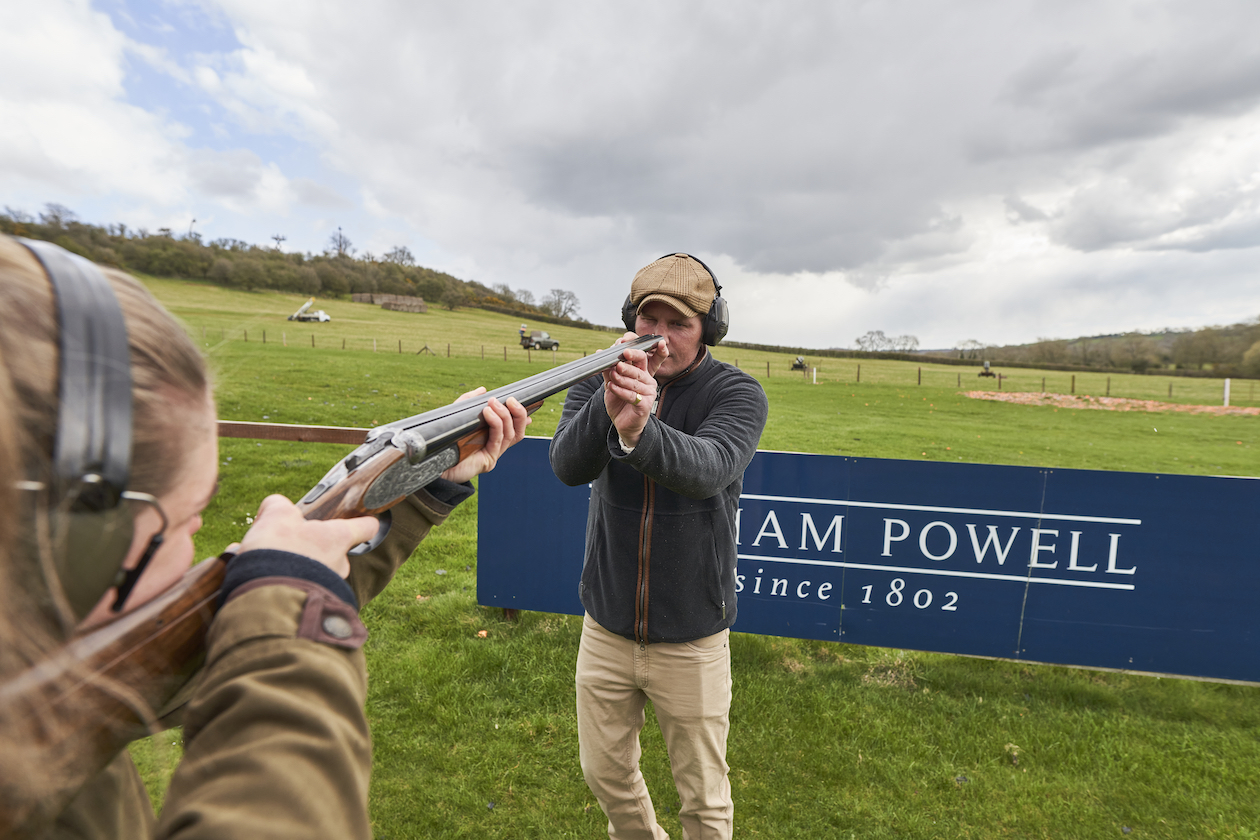
Tom looking down the barrels of The William Powell Sovereign during a gunfit assessment.
How you can tell if your gun fits you
So what’s changed? Even when I was young, it was difficult to buy a day’s shooting. Those involved tended to be wealthy farmers or landowners. These days, however, all that has changed and people are coming into the sport who’ve never owned a pair of wellies. It’s true to say that these people are forking out a lot of money and they want to perform well — having a gun that fits is an essential part of that.
I’m often asked how you can tell if your gun fits you. In truth, it’s not easy. But if the stock is too long for you on an over-and-under, you’ll end up holding your front hand short — and vice versa. If a gun is too short for you, you compensate by stretching out your hand. This can impact the speed of your swing, your line, and ultimately whether you ‘pick up’ the bird or not.
In essence, a gun is designed to shoot where you look but if it’s wrong, it doesn’t and you end up compensating by developing an odd and unnatural technique. Getting a gun fitted is expensive but not as expensive as developing poor technique and watching your friends shoot all the birds you’ve paid for while you hit nothing.
I should add that getting a gun that fits isn’t where a person should start. I fit for hundreds of clients a year and the one thing to remember is that, although gunfit is incredibly important, it will not transform your shooting if your style and technique is all over the place. For gunfit to truly help a shooter and give them the edge, they must be able to mount the gun consistently at least 90% of the time.
It’s best described like this. If you have a suit made but your weight constantly fluctuates, the suit will never fit. Shooting is the same. If your style and technique change, your gunfit is irrelevant. I always recommend a lesson with a decent instructor to confirm you’re consistent before you get a gun fitted.
Mark Osborne, owner of William Powell, said when he started as a youngster “having shooting lessons just wasn’t something that many people who shot would do”. But when he had his first gun fitted it was a revelation. He became a complete convert to the importance of lessons and went on to buy a shooting school, having realised that the shooting world was changing.
Because so many more people are having lessons, gunfitting has increased. People realise they are performing poorly or could perform better and decide they need to get rid of Grandad’s old Greener. In a strange way, shooting has gone back to resembling the days of old, when it was about performing in the field rather than simply being there.
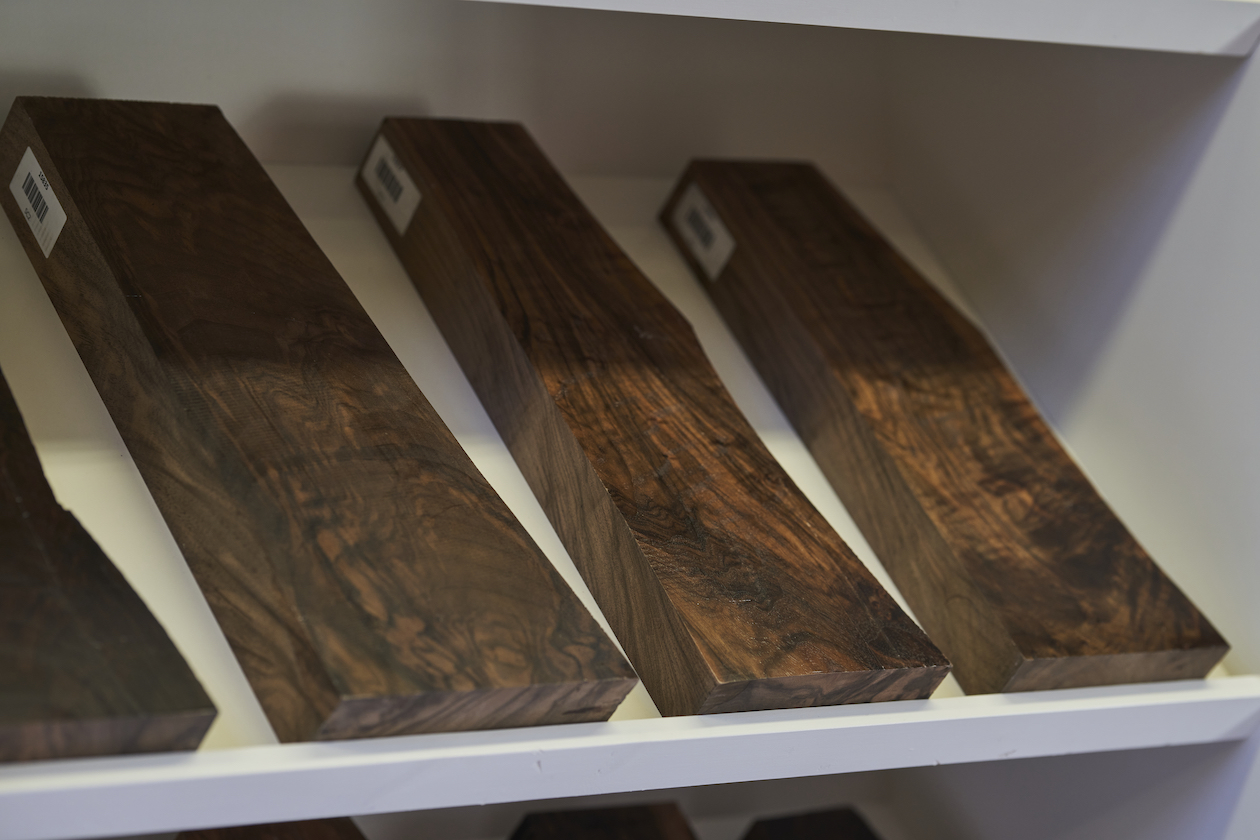
Perazzi stock blanks: getting a bespoke stock made in a decent grade of wood can cost up to £6000
Bespoke
There are two types of gunfit. There is a true gunfit, when a bespoke stock is made from a single piece of wood known as a blank. Timothy Hill of Perazzi explains that getting “a truly bespoke stock is such a fun experience, right from choosing your wood to the final measurements”. The fitting itself will cost you about £400 but getting the stock made, in a decent grade of wood, could be up to about £6,000. It’s certainly not cheap but it’s a once-in-a-lifetime cost.
As a fitter, this is a bespoke situation and most measurements or styles and grips can be achieved. Not only will stock dimensions be looked at, including length of pull, cast and drop, but also depth and width of stock. This includes comb thickness as well as the incredibly important grip measurements, which vary depending on the size of your hand.
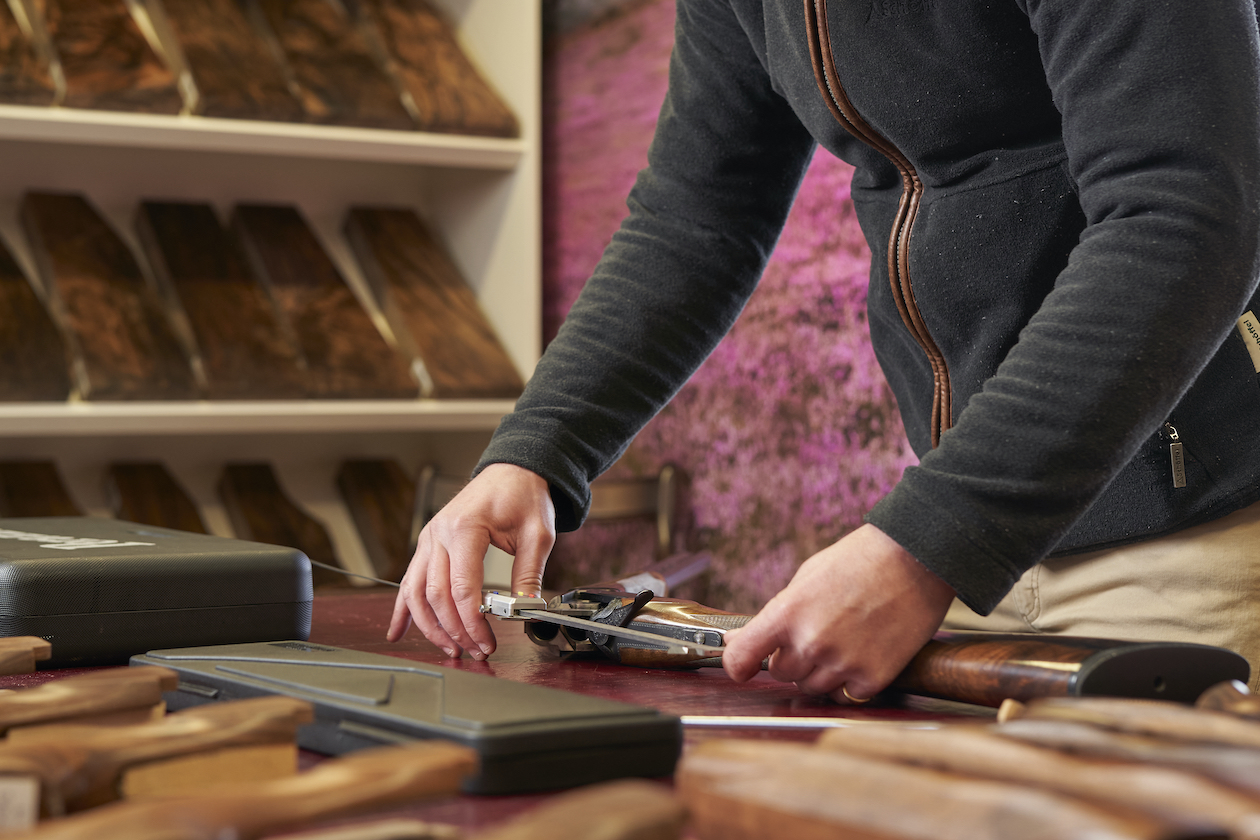
Tom taking stock measurements.
Length of pull
The second, much cheaper option, is to get a gun altered. In this case, you can change the length of the stock, cast and drop. The standard industry rate is about £100 a bend on top of a £400 gunfit, which starts with going to a clayground with a try-gun, which can be adjusted to find your true measurements. Most stocks can be altered, within reason, depending on the strength of the stock and the type of gun. A grip can be changed slightly too but this depends on whether there is enough wood to play with.
‘Length of pull’ — what a layman might call stock length — is a straightforward case of taking wood off or adding wood on. Believe me, you don’t want to be around to watch when a gunsmith is working on your stock. Seeing someone going at your pride and joy with a saw is painful.
Another thing to remember is that you don’t want weird and wacky measurements. Many gun companies now have standard measurements on guns off the shelf. This isn’t an accident, the idea being that, give or take a few adjustments, the majority of people can pick a gun off the shelf and, with small changes, be able to shoot it. Not everyone is lucky but 75% of people generally fall within fairly normal parameters.
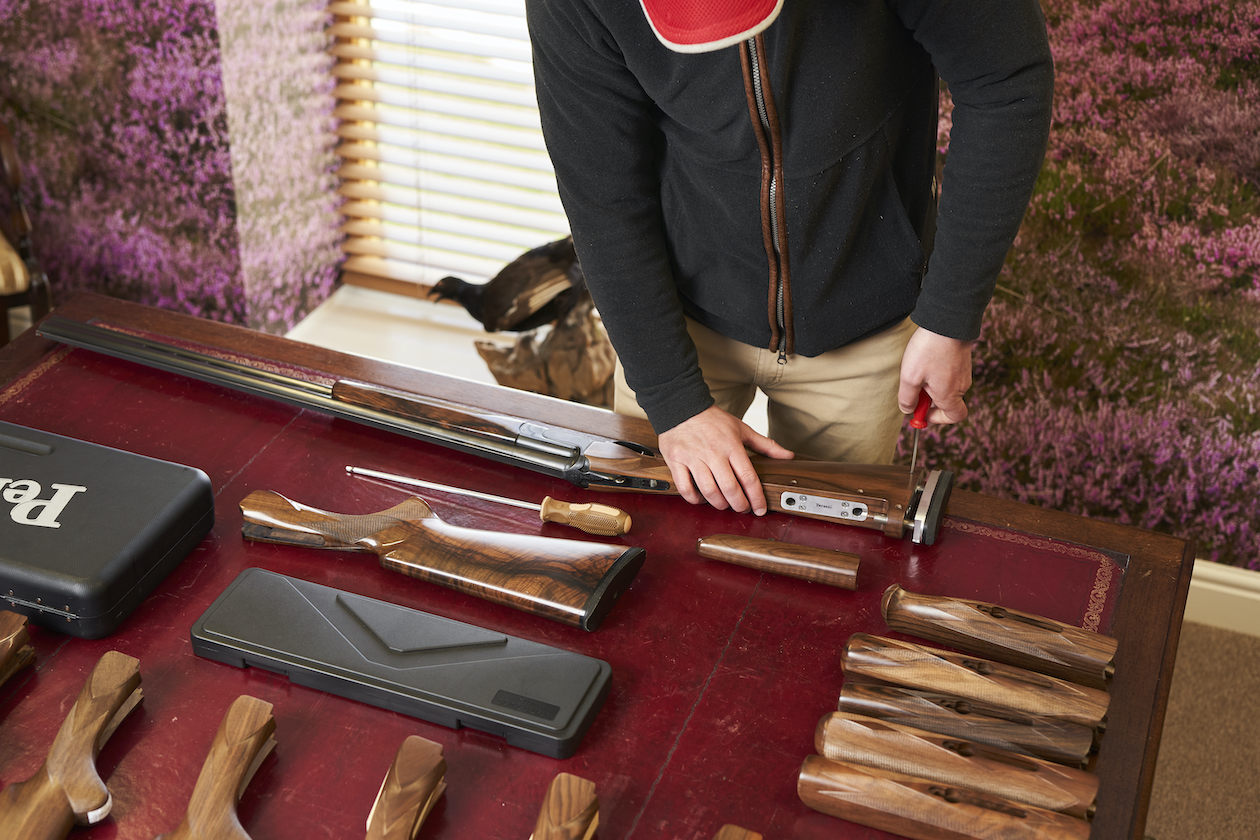
A try-gun is adjusted in the field, then used as a reference
Weird and wacky measurements mean you, as the shooter, are doing something very wrong, you’re perhaps not ready to have your gun fitted yet, or you’ve had your gun fitted by somebody who doesn’t quite know what’s what.
I can’t recommend getting your gun fitted enough but there are not many of us who do it professionally, so be careful. There probably aren’t more than 10 people in the country who can truly fit guns well. Don’t rely on a gun salesman telling you something ‘fits perfectly, sir” in a showroom. If you want your gun fitted correctly, you need to be outside with a try-gun.
Why not commit to trying to ensure your gun mount becomes consistent, then go to see someone who can truly fit guns? Consistency and the correct fit is a pretty lethal combination as far as a pheasant is concerned, and shooting well is far more enjoyable than shooting poorly.
Related Articles
Get the latest news delivered direct to your door
Subscribe to Shooting Times & Country
Discover the ultimate companion for field sports enthusiasts with Shooting Times & Country Magazine, the UK’s leading weekly publication that has been at the forefront of shooting culture since 1882. Subscribers gain access to expert tips, comprehensive gear reviews, seasonal advice and a vibrant community of like-minded shooters.
Save on shop price when you subscribe with weekly issues featuring in-depth articles on gundog training, exclusive member offers and access to the digital back issue library. A Shooting Times & Country subscription is more than a magazine, don’t just read about the countryside; immerse yourself in its most authoritative and engaging publication.



